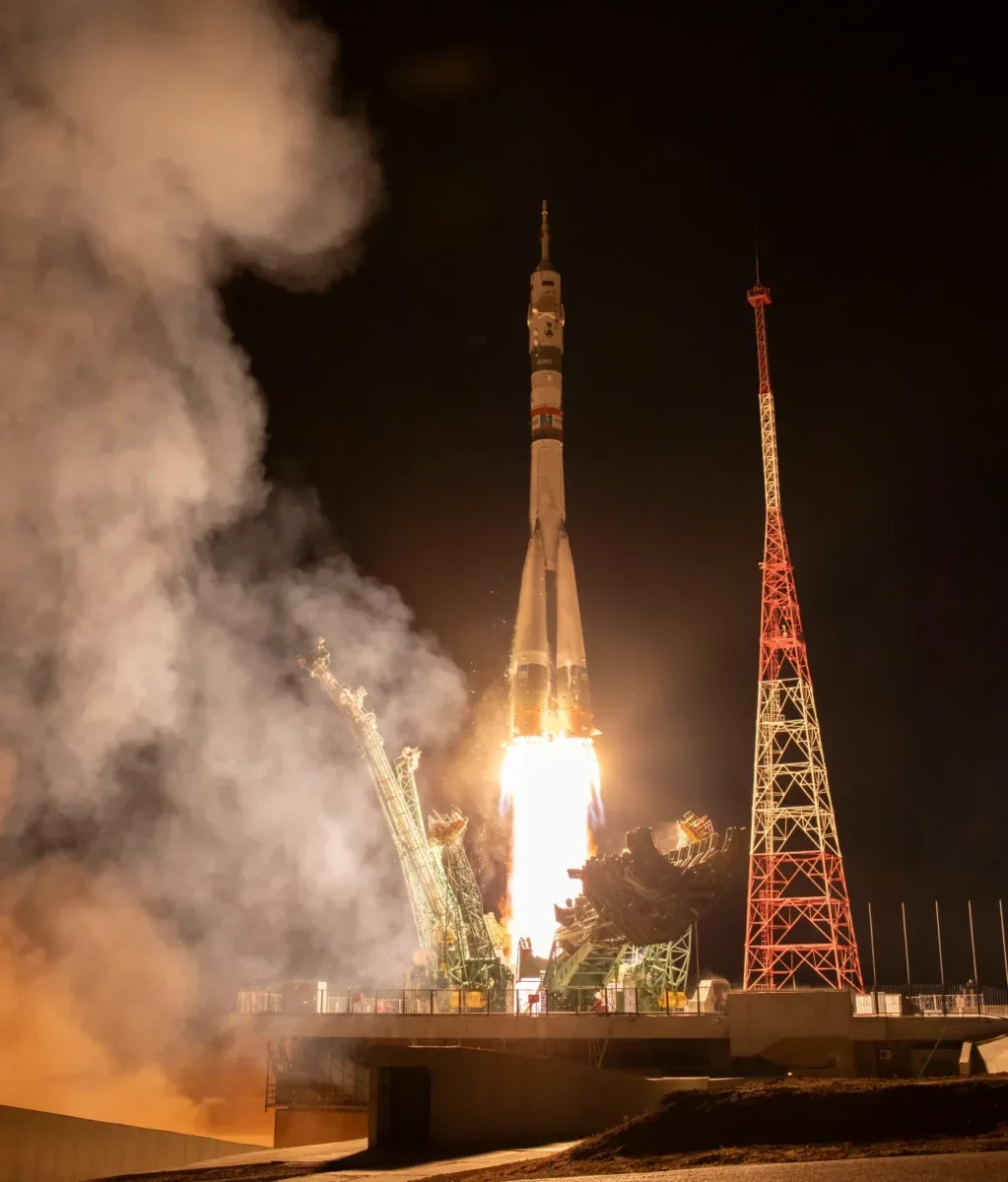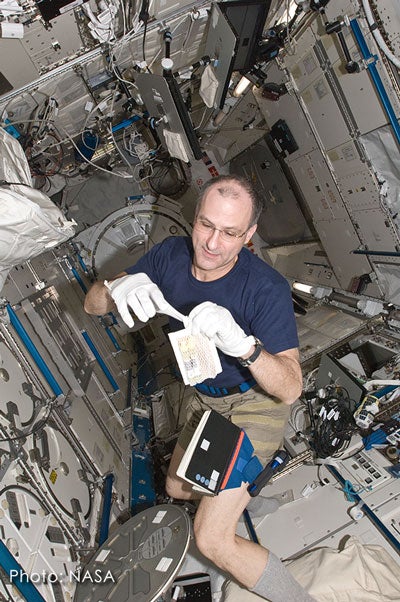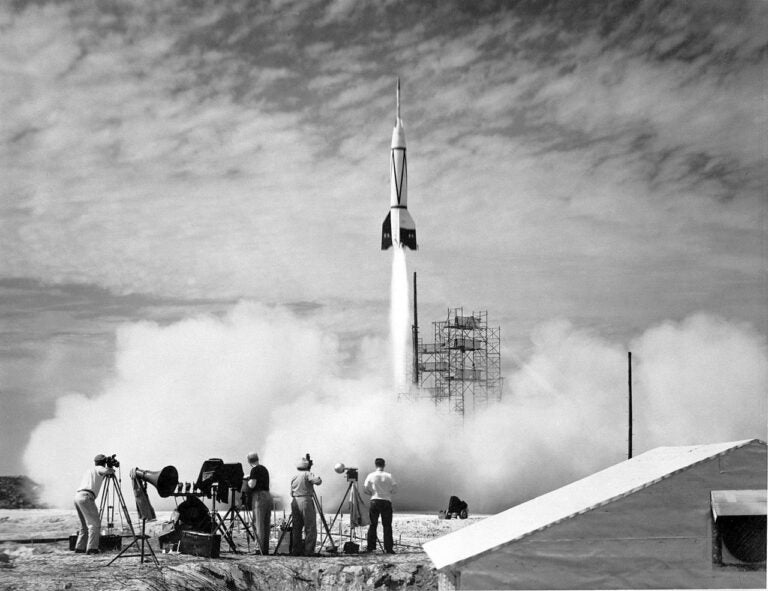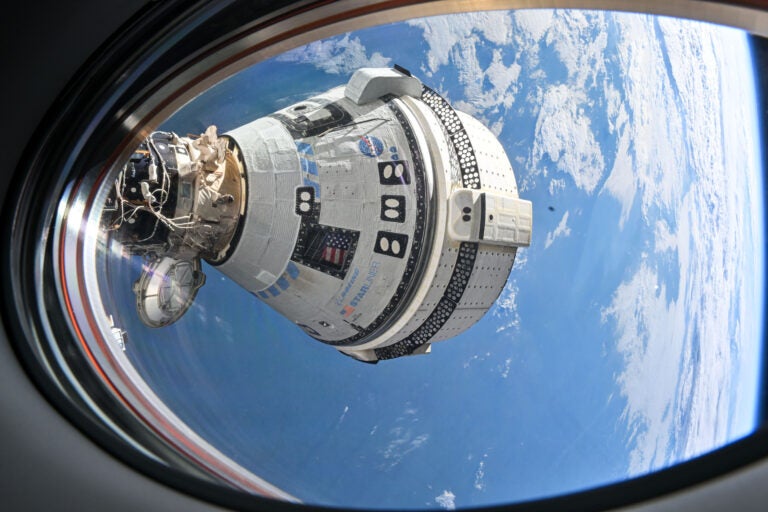
When Don Pettit boarded the International Space Station (ISS) on Sept. 11, it was for him a homecoming. The 69-year-old chemical engineer already boasts a year-plus in space on three ISS missions between 2002 and 2012. But Pettit expected to have an important first port of call after he entered his Earth-circling habitat, office, and lab for the next six months: the toilet.
“After the hatches are open,” the Silverton, Oregon, native quipped in an interview, “and we’ve done all our congratulatory hugs of our crewmates, I’m probably going to make a beeline straight for the toilet.”
Pettit’s pitstop is unsurprising after hours cocooned in Russia’s tiny Soyuz MS-26 spacecraft. He launched from Kazakhstan’s remote Baikonur Cosmodrome at 9:23 P.M. local time, with Russian cosmonauts Alexey Ovchinin and Ivan Vagner. The trio orbited Earth twice, then docked just over three hours after liftoff at the station’s Rassvet module, successfully beginning the next spaceflight of NASA’s oldest active astronaut.
Expedition 72
Awaiting their arrival was Expedition 71 Commander Oleg Kononenko, the world’s most experienced space traveler with 1,100 days in space (as of Thursday afternoon) spread over a five-mission career. He and Pettit are well-acquainted — they spent 6.5 months together on the station in 2011-2012.
Kononenko and cosmonaut Nikolai Chub are nearing the end of a continuous year in space. Their Expedition 71 crewmates include Matt Dominick, Mike Barratt, Jeanette Epps, Aleksandr Grebenkin, and Tracy Dyson — all ISS residents since March and all due to return home in the coming weeks.
Also aboard the station are Butch Wilmore and Suni Williams. Their planned weeklong ISS stay in June was protracted to eight months by technical woes that afflicted their Boeing Starliner spacecraft. Starliner returned to Earth empty last weekend. Wilmore and Williams will land next February on SpaceX’s Dragon Freedom.
In the meantime, Soyuz MS-25 lands on Sept. 23, bringing Kononenko and Chub home after 373 weightless days and ending Dyson’s 184-day mission. Before leaving the ISS, Kononenko will hand command to Ovchinin, officially starting Expedition 72.
On Sept. 24, Crew Dragon Freedom is scheduled to launch. Two of its four seats will be taken by Nick Hague and Aleksandr Gorbunov. Its empty seats will be occupied by Wilmore and Williams when all four return to Earth next spring. And on Oct. 6, Dragon Endeavour leaves the ISS with Dominick, Barratt, Epps, and Grebenkin after 216 days — the longest mission by any U.S. crew-carrying spacecraft.
After these departures, Expedition 72 will continue into the fall as Ovchinin, Vagner, Pettit, Hague, Gorbunov, Wilmore, and Williams begin a busy increment of new spacecraft, science, and spacewalks.
They will welcome five visiting vehicles — two research-laden Dragons in October and December, two Russian Progress ships in November and February, and the maiden voyage of Sierra Space’s cargo-carrying Dream Chaser mini-shuttle. Those missions will restock the ISS, facilitating hundreds of science and technology investigations.
Spacewalks are also planned. One in December by Ovchinin and Vagner will install a new X-ray spectrometer. And up to five U.S. spacewalks will gather microbial specimens, prepare for future ISS Roll-Out Solar Array (IROSA) upgrades, and emplace a new silicon tracker layer on the station’s Alpha Magnetic Spectrometer (AMS) to improve its sensitivity.
A long career
For Pettit, Expedition 72 marks a welcome return to his happy place in space. “I’m like a cowboy that wants to be on a horse out in the range,” he said. “I’m an astronaut that needs to be sitting on a rocket and flying in space.”
Pettit is one of NASA’s longest-tenured astronauts still on active duty. A staff scientist at New Mexico’s Los Alamos National Laboratory before his 1996 NASA selection, his first spaceflight came about by accident — but was impinged by tragedy.
In 2001, he joined the Expedition 6 backup crew. But when a prime crew member was medically grounded the following year, Pettit took his place and launched to the ISS on shuttle Endeavour in November 2002.
Three months later, Columbia disintegrated during re-entry, killing her crew and stalling the half-built station. In May 2003, Pettit became one of the first Americans to land in Russia’s Soyuz craft. That drama-tinged homecoming inadvertently entailed a steep ballistic re-entry that subjected Pettit and his crewmates to harsh acceleration loads.
When shuttle missions resumed, Pettit rode Endeavour again on STS-126 in November 2008. During that flight, he tested a self-made zero-gravity coffee cup that permitted astronauts to drink coffee without the encumbrance of a straw.
Pettit’s coffee cup won the first-ever patent for an object invented in space. He intends to make good use of his invention on Expedition 72, pulling the cups out for celebratory events so his crewmates can “drink in a manner that civilization is used to.”

His last ISS mission from December 2011 to July 2012 raised his space-time tally to 369 days — the fourth American to pass a year in orbit. During that flight, SpaceX’s first Dragon cargo ship visited the ISS. And it was Pettit who famously radioed to Mission Control: “Houston, Station, looks like we’ve got us a dragon by the tail!”
Self-described on his X (formerly Twitter) profile as an engineer by schooling, a scientist by profession, and an explorer by heart, Pettit found fame for his “Saturday Morning Science” and “Science Off the Sphere” — impromptu, comical and often quirky demonstrations that brought the wonders of weightlessness to audiences on Earth.
In one session, he showed how music from an MP3 player caused water drops to oscillate. Another demonstrated static electricity with aluminum foil and Lego bricks. And a third saw him play a makeshift didgeridoo, fashioned from an ISS vacuum cleaner hose.
Asked if he has similar plans this time round, an impish smile creased Pettit’s lips. “Of course,” he said. “I would not fly in space without doing a science or educational demonstration in my off-duty time.”
That off-duty time also permits him to indulge in photography — a love he has nurtured since sixth grade. Pettit’s jaw-dropping pictures from the station’s multiwindowed cupola range from star trails to the effervescent glow of nighttime city lights on Earth.
During Expedition 72, he plans to photograph high-altitude noctilucent clouds and watch for changes to the Sun as it nears solar maximum. He will also keep his camera at hand for serendipitous events, “because you are there and because you can.”
Sexagenarian spaceflight
While he is currently the oldest active-duty astronaut at 69, Pettit is not the first sexagenarian to visit space. That honor belongs to Story Musgrave, who flew space shuttle Columbia in 1996 aged 61. Nor is he history’s oldest spaceman. Others flew in their seventies: from Project Mercury hero John Glenn to Virgin magnate Richard Branson, and from Laura Shepard Churchley, daughter of America’s first man in space, to the oldest ISS visitor, 72-year-old Larry Connor.
Still more flew at even more advanced ages. Aviator Wally Funk became the oldest woman astronaut at 82. Eighty-year-old Jon Goodwin was the first person living with Parkinson’s disease to reach space. And in May 2024, Ed Dwight — sculptor, former aviator, and one-time candidate for the first African-American astronaut — flew Blue Origin’s New Shepard capsule to the edge of space, aged 90 years and 253 days.
But sexagenarians have carved their own impressive niche in the annals of space travel. In 2004, 63-year-old Mike Melvill became the first commercial astronaut when he flew SpaceShipOne to the edge of space. And several over-60s have visited the ISS, including fare-paying tourists Dennis Tito, Gregory Olsen, and Charles Simonyi, as well as Axiom private astronauts Michael Lopez-Alegria, Eytan Stibbe, Peggy Whitson, and John Shoffner. In 2013, Pavel Vinogradov observed his 60th birthday in space. And planetary scientist S. Alan Stern and venture capitalist Lane Bess have flown suborbital missions with Virgin Galactic and Blue Origin.
When Pettit launched this week, he surpassed his 65-year-old Expedition 71 crewmate Barratt as the oldest person to fly a months-long space mission. By the time he returns to Earth next April, Pettit will have accrued 570 days in space — making him America’s second most experienced astronaut behind Whitson.
Nor does Pettit expect Expedition 72 to be his final mission. “I like to say this is my next spaceflight,” he said. “I come alive when I’m in orbit. There’s a certain facet of when I go into space that just fundamentally is on resonance with my soul.”









